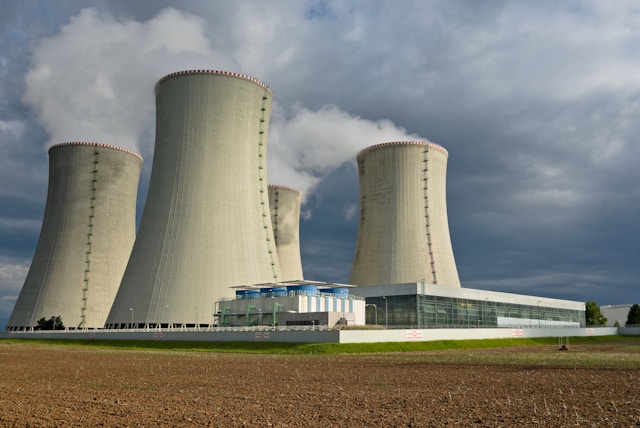Energy management is at the focus of new research

Michelle Levesque's research with MIRARCO through Laurentian University could one day improve a mine's bottom line when it comes to energy usage. — Ph
Michelle Levesque's research with MIRARCO through Laurentian University could one day improve a mine's bottom line when it comes to energy usage. — Photo courtesy Michelle Levesque
Looking for innovative solutions has always been at the core of MIRARCO (Mining Innovation, Rehabilitation and Applied Research Corporation), a not-for-profit corporation with a team of dedicated researchers who look for solutions for such common mining challenges as geomechanics, hazard assessment and risk mitigation, visualization of complex data sets, climate change adaptation and environmental sustainability. MIRARCO is based in Sudbury, Ontario.
One researcher on the MIRARCO team is Michelle Levesque, whose work in the area of demand-side energy conservation holds far-reaching promise for the industry.
Levesque was first introduced to the mining industry while working for Golder Associates, after completing a bachelor’s degree in chemistry. A course on alternative energy sources and technologies prompted Levesque to further her education; she decided to pursue a master’s degree in natural resources engineering and chose energy and carbon management in the mining industry as the topic of her master’s thesis, which she completed in December of 2011. Looking to take her research to the next level, Levesque continued her studies, pursuing a PhD in the same field.
Analyzing energy-consumption data from a mining operation as part of her master’s thesis, Levesque realized that a lot of the energy the mine was consuming was simply being released into the air as waste.
“My analysis concluded that a substantial amount of the energy consumed in the operation was released into the atmosphere as heat via off-gas or slag,” said Levesque.
This led Levesque to her current research project, in which she will be investigating “the feasibility of recovering and reusing this waste heat in order to reduce the amount of fuel consumed at this operation.”
By narrowing down the source of waste heat and the processes by which it is lost, Levesque is looking to formulate solutions and identify best practice initiatives in the mining industry with respect to energy management and conservation.
“I am also assembling a database of energy intensity for various mining operations in order to establish an industry benchmark,” said Levesque, who is currently conducting an energy audit for a mining operation with the goal of identifying opportunities for reducing energy consumption and carbon emissions.
“I believe that this research is important for the mining industry, since energy costs are significant for mining companies,” she said. “As companies are mining at greater depths, energy consumption is increasing. In addition, energy prices are also rising; therefore, in order for companies to remain competitive, it is important to manage energy in order to reduce costs.”
With limited data available in the public domain—since many mining companies consider energy consumption confidential information and only a few include consumption in corporate sustainability reports—Levesque finds that the lack of a reporting standard makes it difficult to collect data that can be used to measure improvements. This is one of the many reasons she’s looking to establish ISO 50001 as just such a benchmark, with the aim to improve energy management across the industry.
“I am hoping that the energy-efficiency measure identified during my energy audits of mining operations will be implemented,” said Levesque, “and that best practice energy-conservation measures will be disseminated and adopted.”
While there are currently commercially available technologies for capturing heat waste, the challenge, explained Levesque, lies in identifying the most suitable type of heat exchanger for the application and determining if the project is financially viable. It is in these areas that Levesque is hoping she can help to provide some answers as an energy champion.
“Companies should perform an energy audit in order to identify where energy is consumed, because you can’t control what you don’t measure,” said Levesque. “An energy audit can reveal areas in the process where energy consumption can be reduced.”
The benefits to operations that do undergo such an audit, said Levesque, can include overall cost reductions, improved profitability, reduction of greenhouse gas emissions, enhanced competitiveness and overall improvements to a company’s public image, as well as the long-range implications when energy waste-capture technologies are more widely utilized.
With so much focus on production, many companies are reluctant to consider taking on energy-efficient projects—and there can be risks that come with implementing any major technology changes. But Levesque believes that mining operations have much to gain by undergoing an audit and making strides to improve those areas where energy waste is prevalent. And she thinks it’s only a matter of time before an established energy-management system such as outlined by ISO 50001 becomes regular standardized practice in the industry.
Waste not, want not
According to Michelle Levesque, a researcher studying demand-side energy conservation for MIRARCO, these are some simple ways to reduce energy consumption in the mining industry.
-
Reduce vehicle idling
-
Switch off equipment when it isn’t required
-
Shut down auxiliary and exhaust fans during shift changes and on weekends—when nobody is underground
-
Repair compressed air leaks
-
Utilize waste heat from motors, compressors and fossil-fuelled electricity generators
-
Improve equipment maintenance
-
Investigate alternative energy sources
-
Reduce vehicle idling
-
Switch off equipment when it isn’t required
-
Shut down auxiliary and exhaust fans during shift changes and on weekends—when nobody is underground
-
Repair compressed air leaks
-
Utilize waste heat from motors, compressors and fossil-fuelled electricity generators
-
Improve equipment maintenance
-
Investigate alternative energy sources


